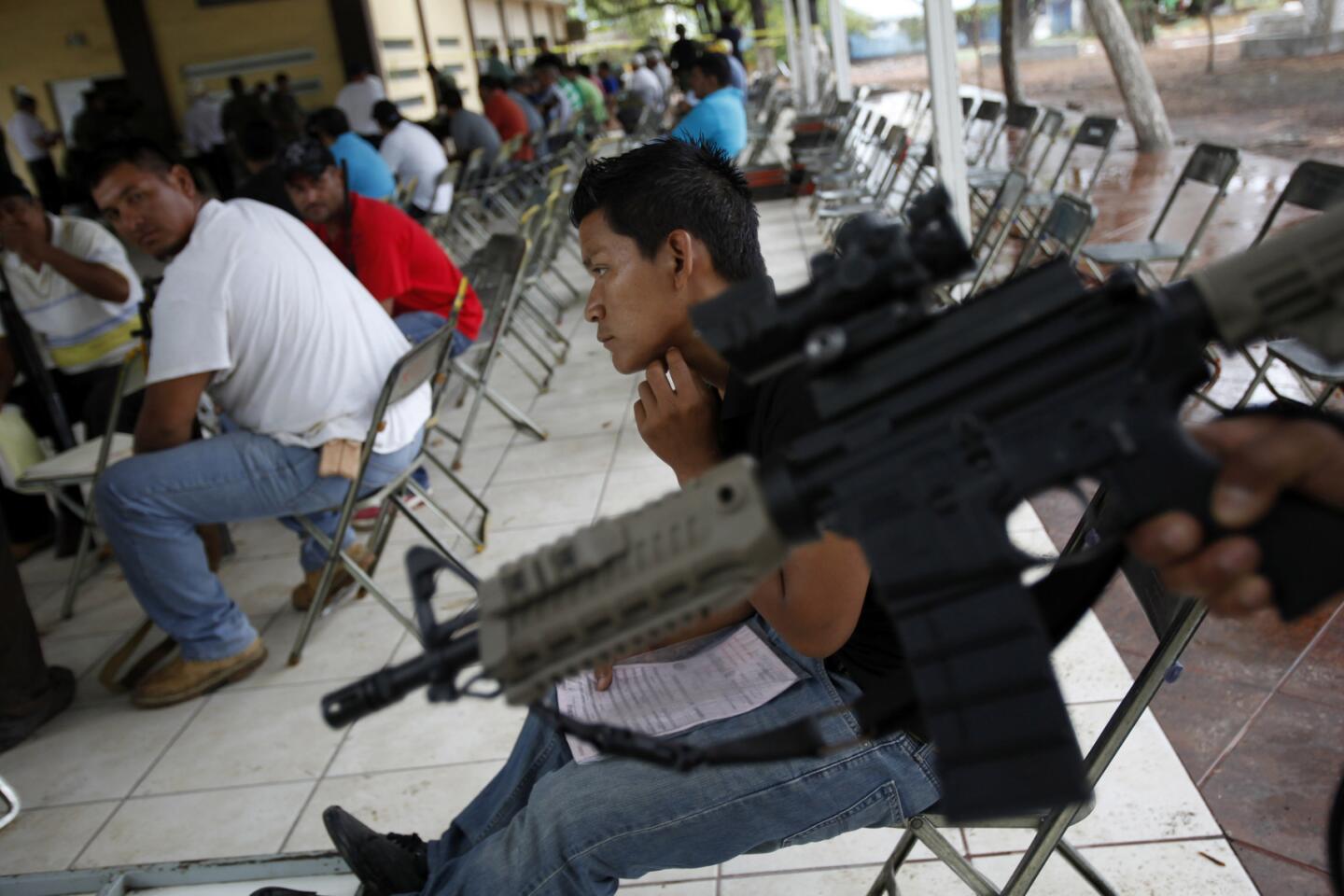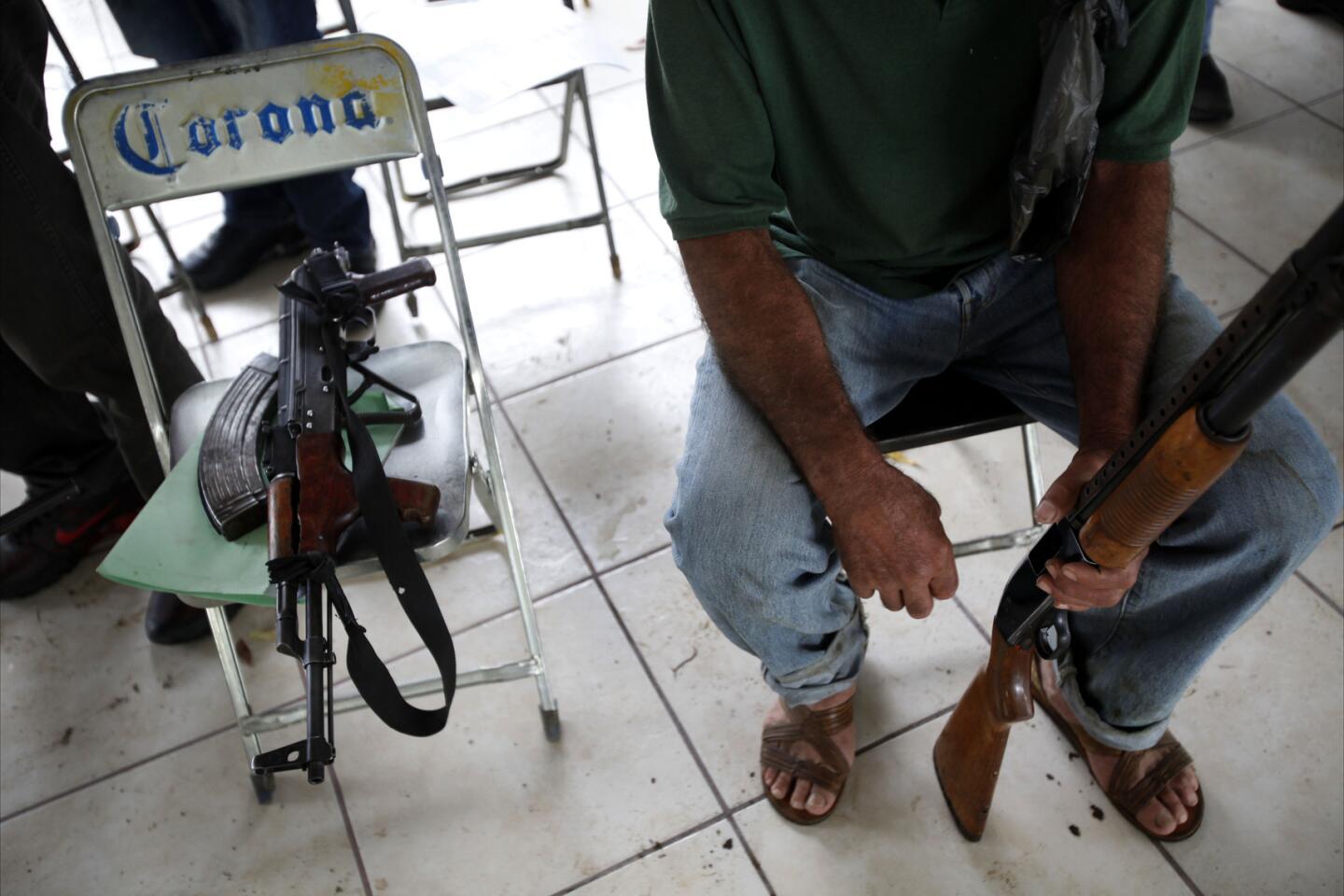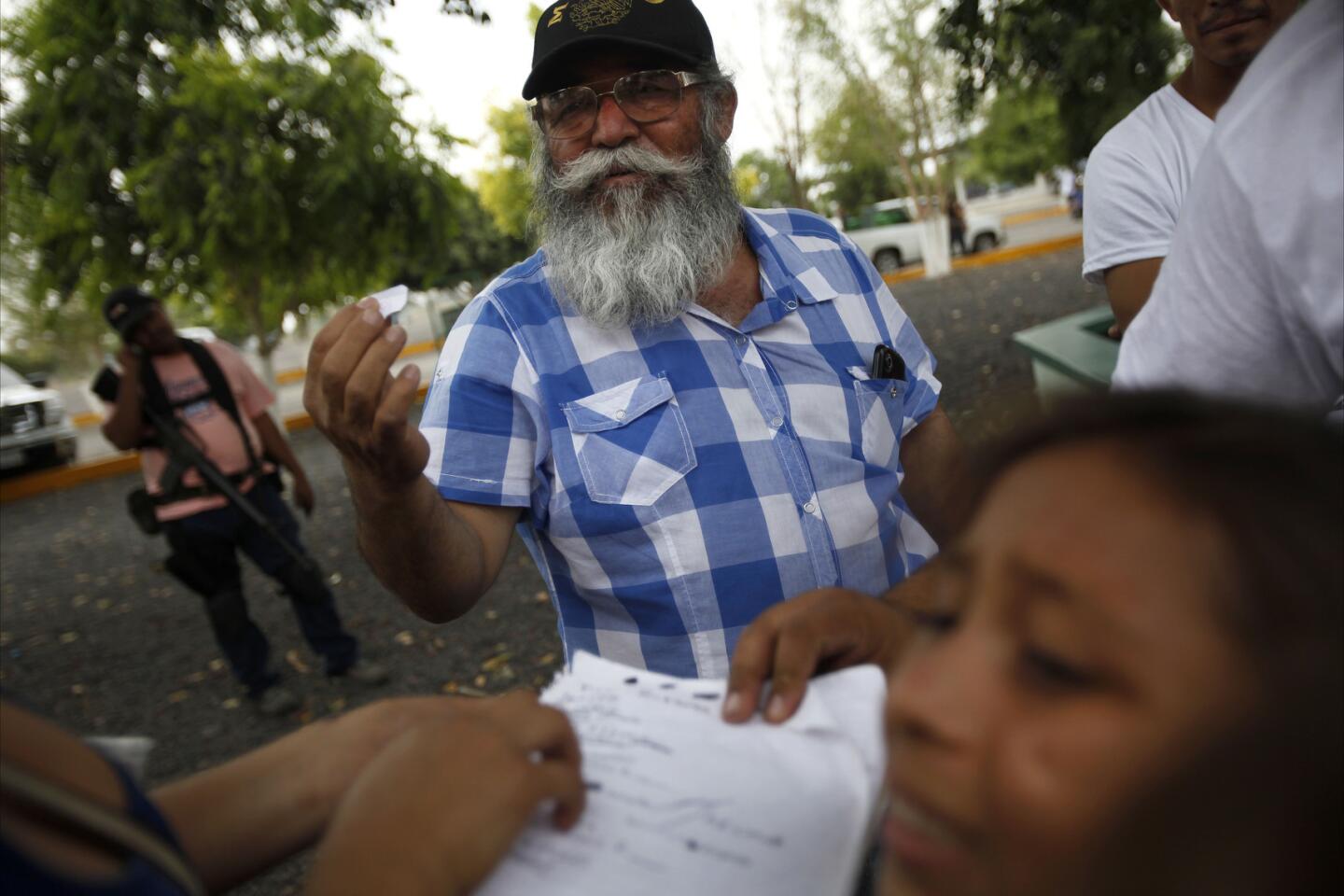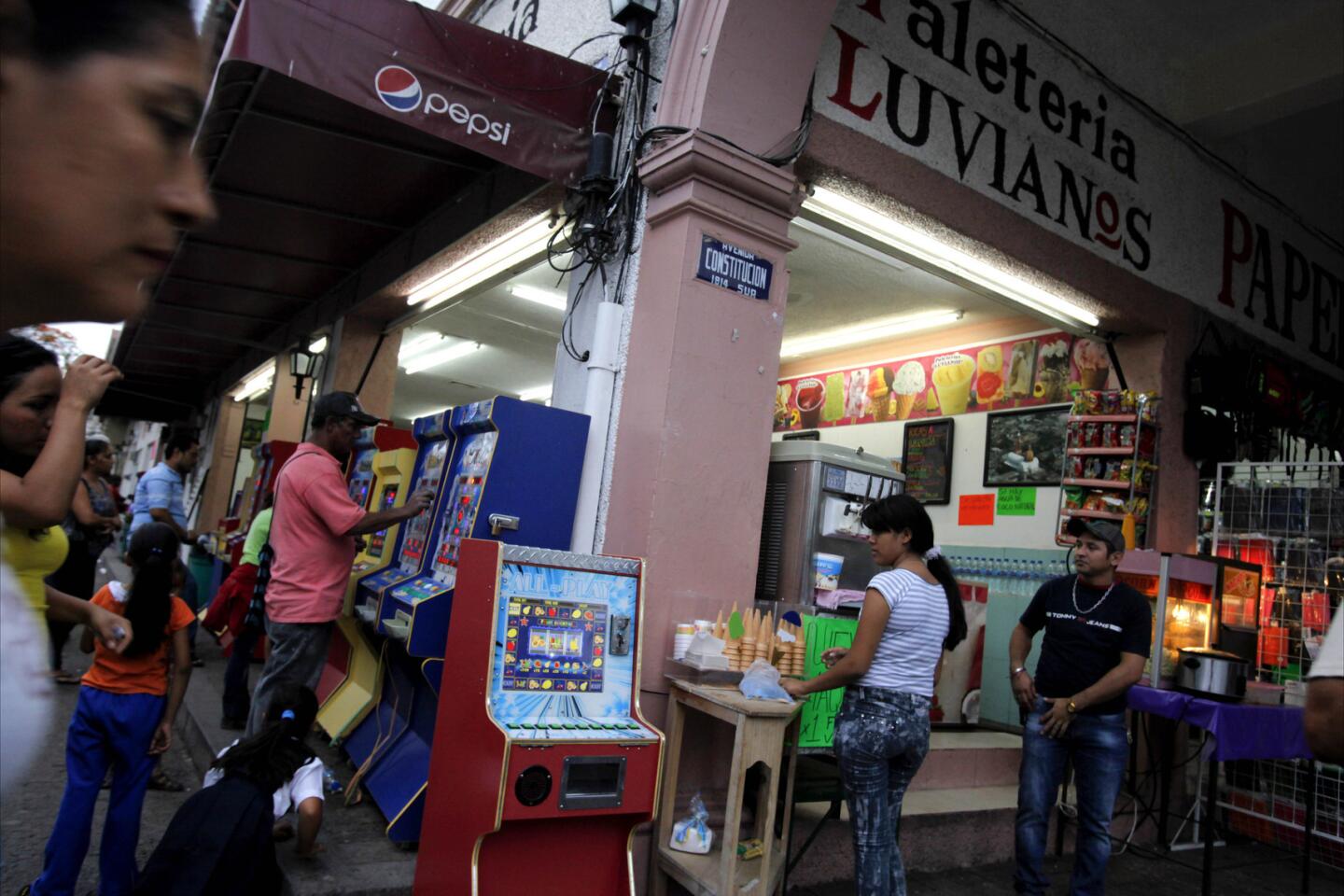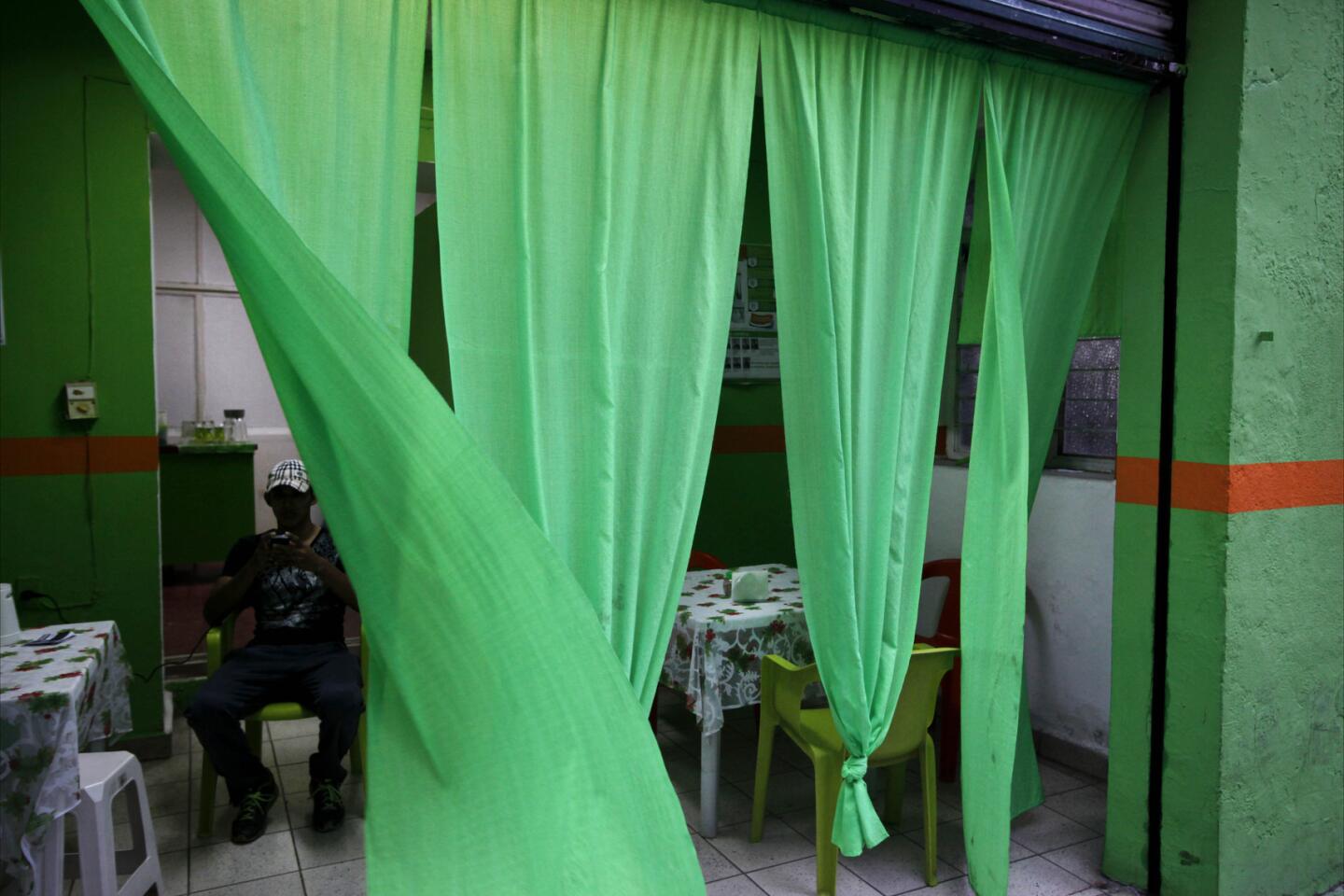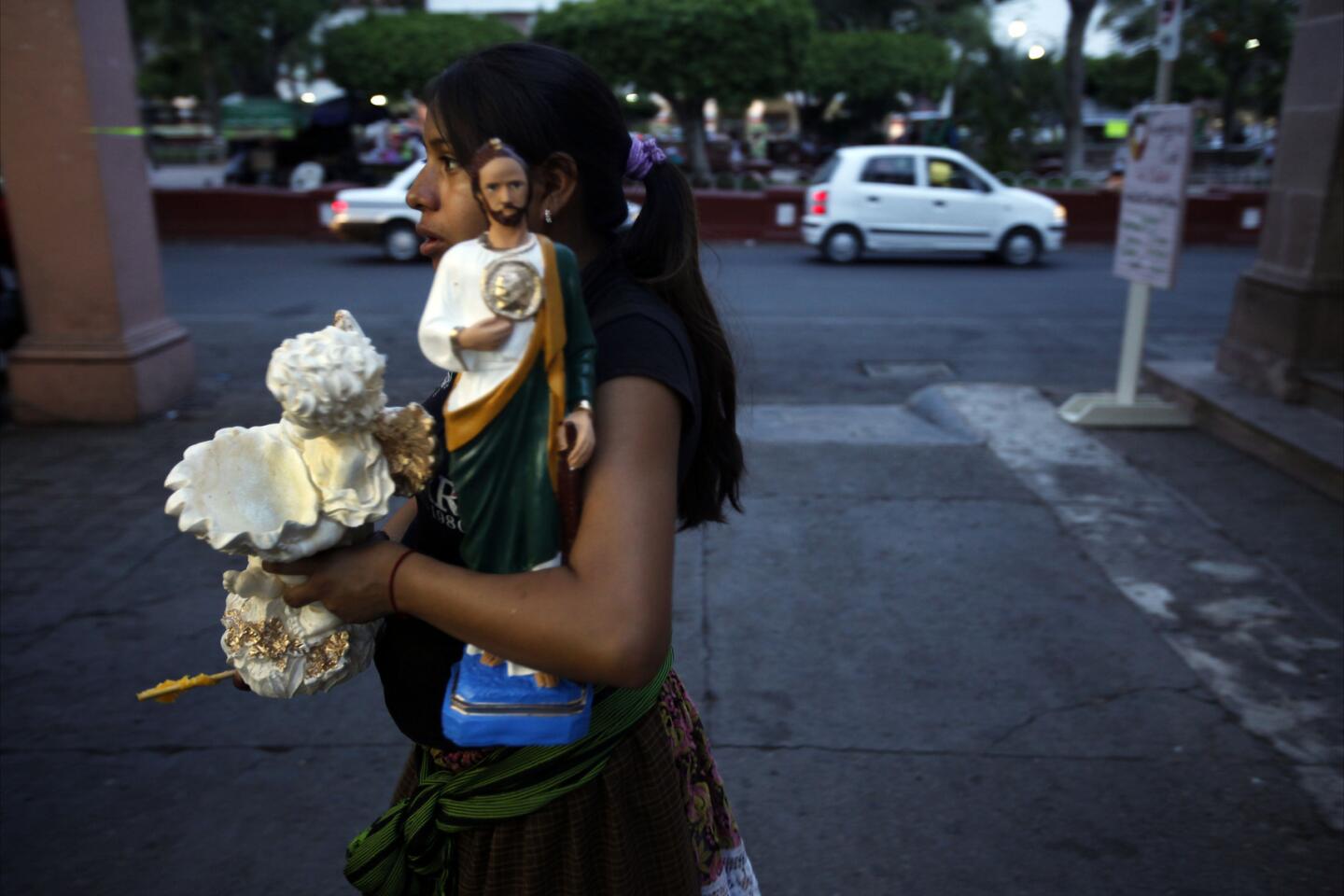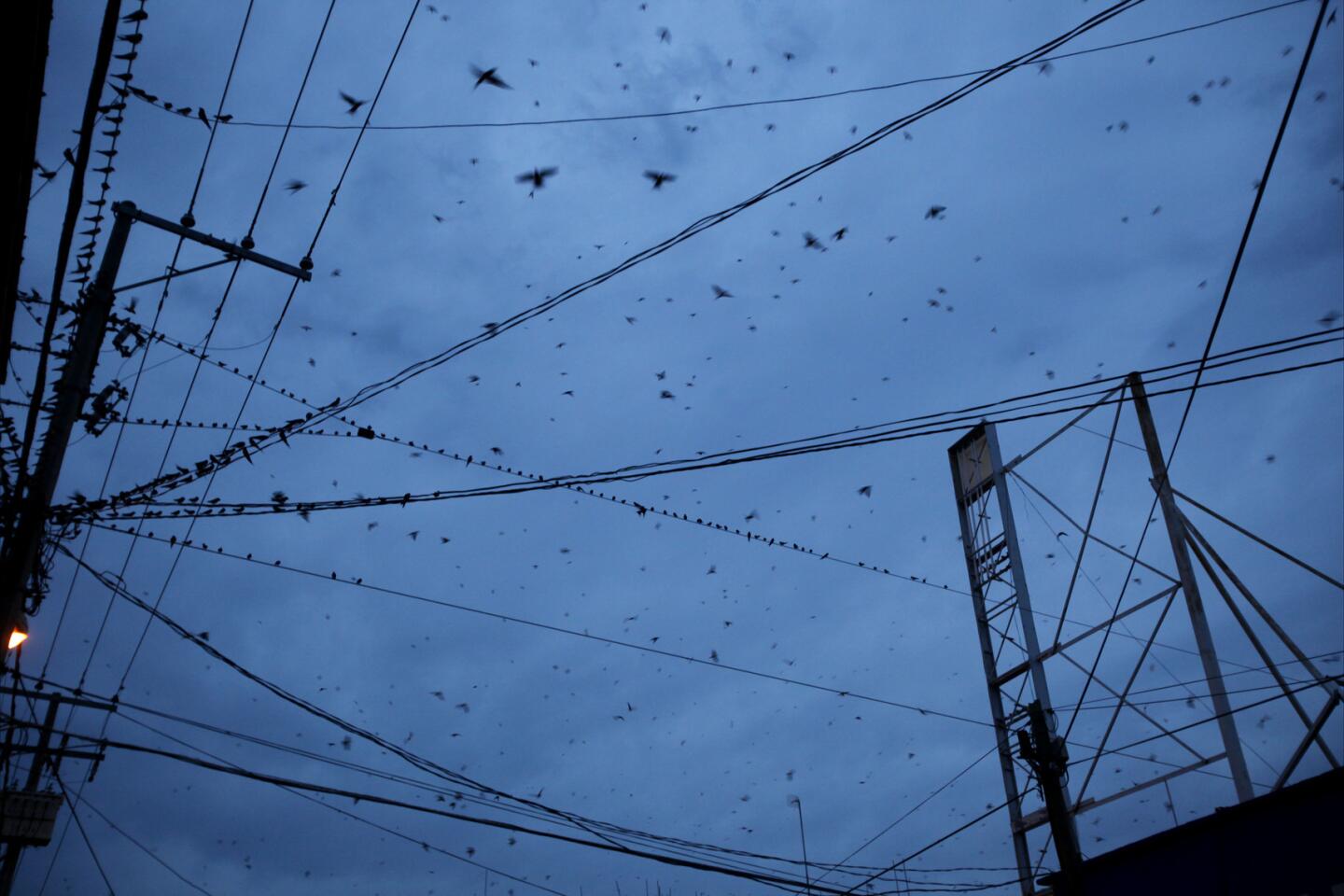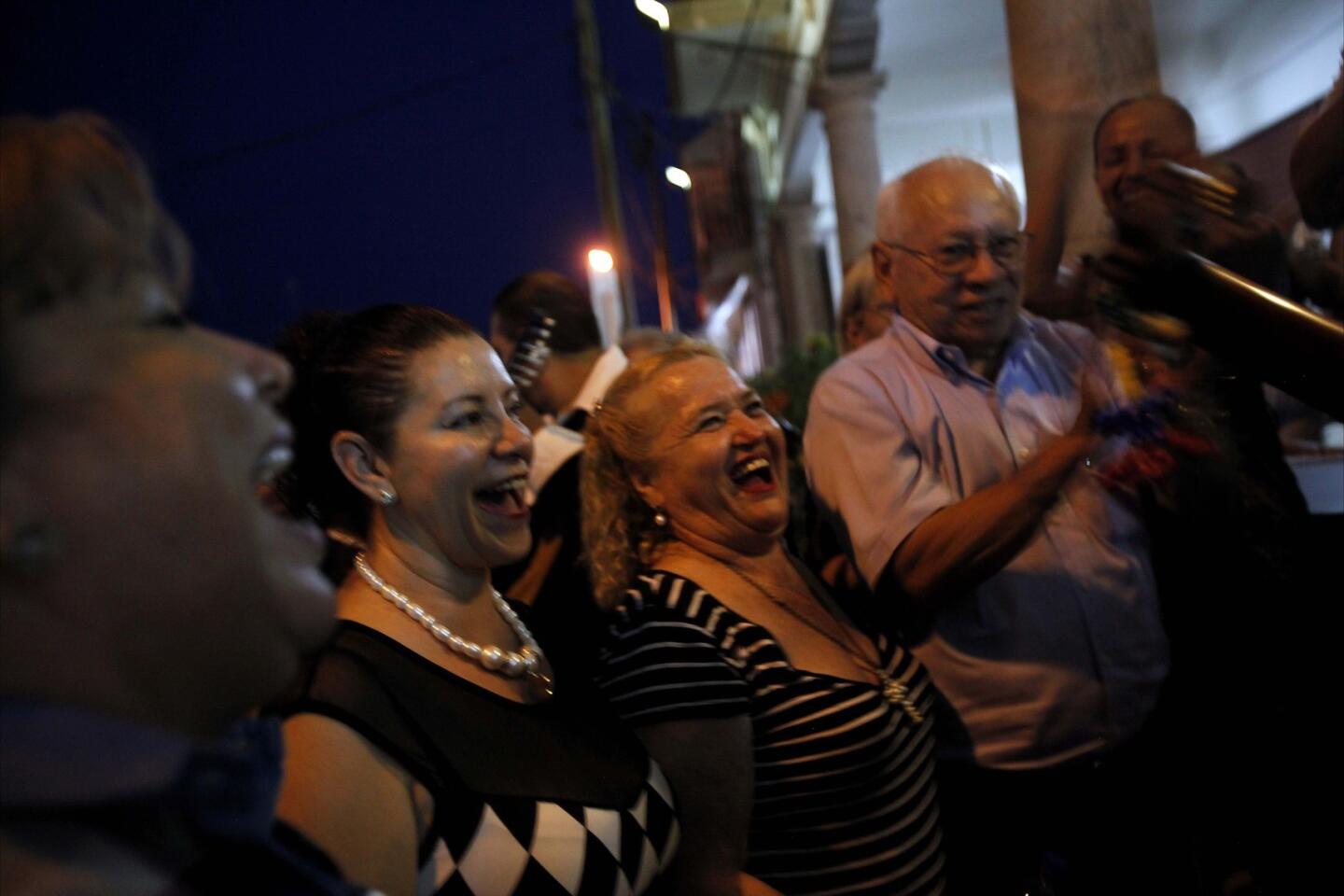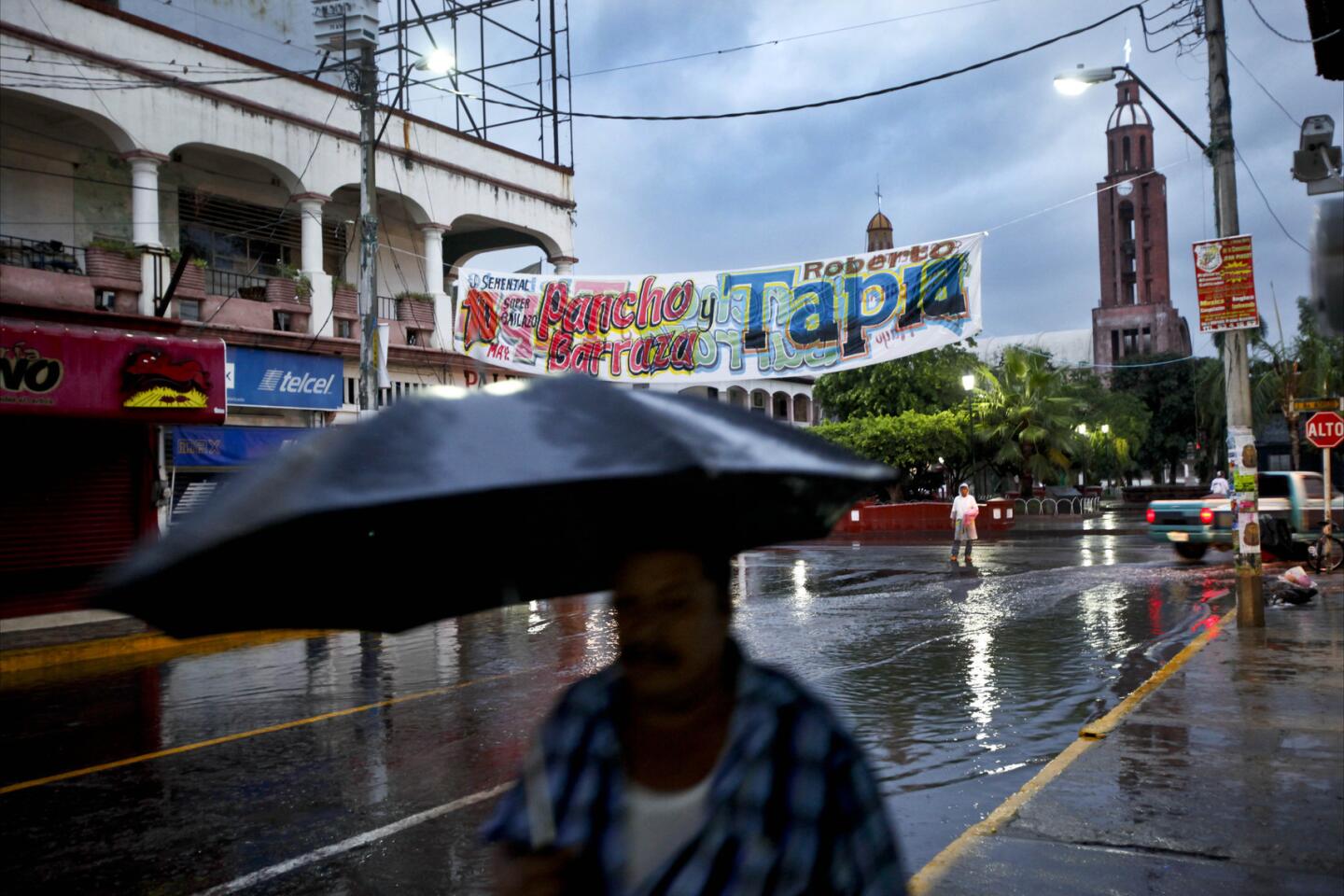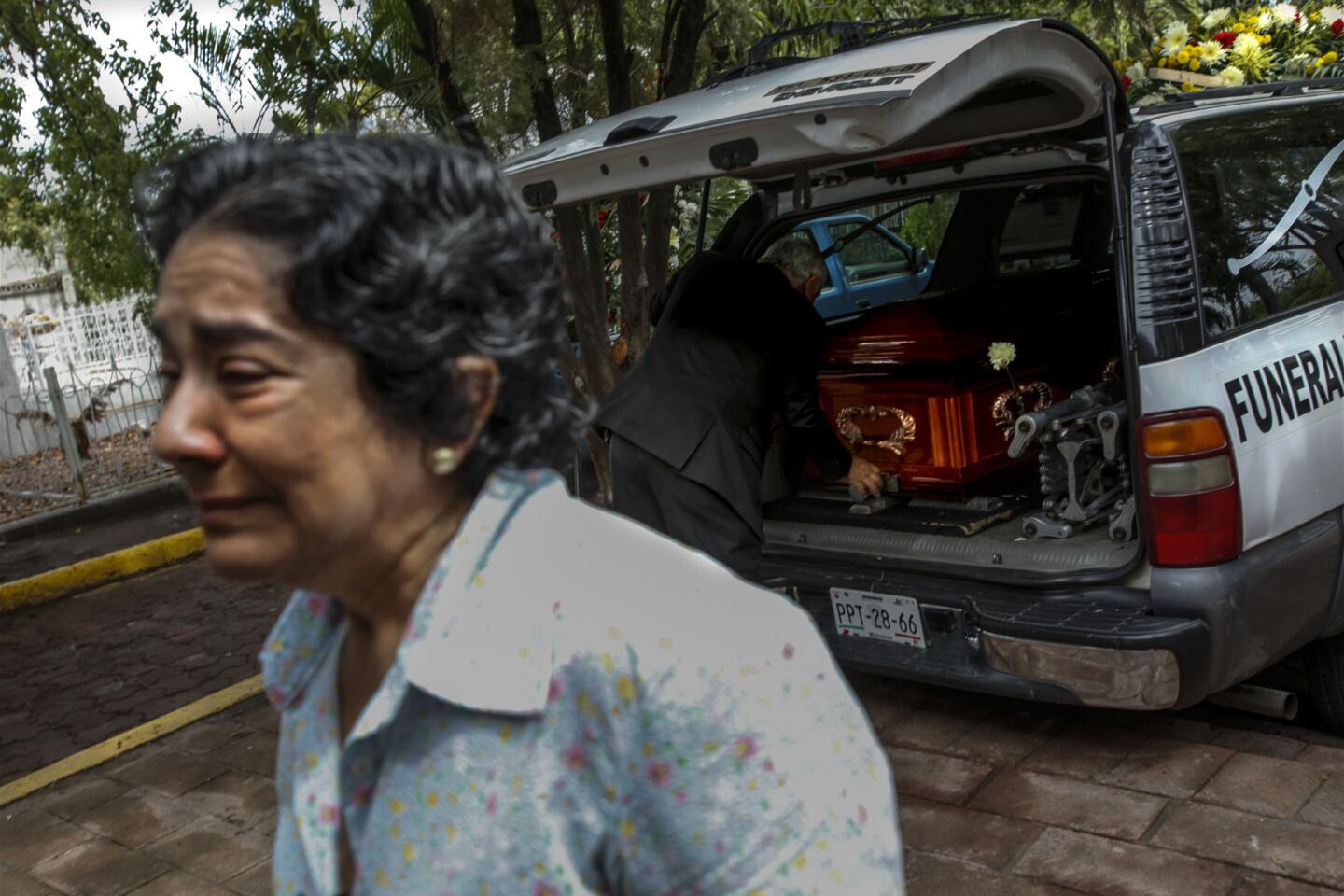Death toll rises in Mexico’s roiling Michoacan state
- Share via
Reporting from MEXICO CITY — Five more members of a vigilante “self-defense” group were killed during the weekend in a spiral of violence sweeping parts of Mexico’s troubled Michoacan state, showcased by the government in the last year as a security success story.
At least 25 people have been killed in the last month in a string of ambushes, clashes and other shootings involving vigilantes, drug traffickers, civilians and the army and federal police. It has not always been clear who shot whom.
The dead included the son of one of the top founders of the so-called self-defense paramilitary organizations that rebelled against traffickers and local authorities in Michoacan two years ago.
In an attempt to restore order after the rise of the vigilante groups, President Enrique Peña Nieto early last year poured federal forces into Michoacan and appointed longtime aide Alfredo Castillo as federal commissioner for the area. Castillo attempted to convert the vigilantes into a more formal rural police force, but many refused to join or disarm.
The raging killings, kidnappings and extortion that had long dominated Michoacan, where drug gangs for years controlled police departments and city halls in many parts of the state, seemed to decline. Several top leaders of the principal cartel, the Knights Templar, were captured.
But violence erupted again late last year. Criminal gangs, including one offshoot of the Knights Templar calling itself the Viagras, re-infiltrated Michoacan cities, and factious rivalry among the vigilante groups also triggered clashes.
For Peña Nieto, pacifying Michoacan and Castillo’s role as federal commissioner are tests of whether the government’s most highly touted security policy can work.
Castillo on Dec. 23 dispatched more federal troops to the western part of Michoacan around the city of Apatzingan, a particularly restive agricultural region that sits on the edge of territory known as Tierra Caliente, or Hot Land.
One of the worst incidents occurred Jan. 6. Nine people were shot to death during a federal operation to take back Apatzingan City Hall from gunmen who occupied it last month.
Initially, Castillo said the dead, most of whom were in vehicles outside City Hall and included at least two women, were killed by the army and police after opening fire. Several witnesses who spoke to reporters, however, gave different versions, including one that suggested the dead were not armed.
Castillo on Monday changed his account of the shooting. In a presentation to journalists, he said autopsies and further investigation indicated five of the nine were killed either by crossfire or friendly fire — they had bullet wounds from weapons used by federal police and by gangsters. Two others were killed by federal police, one was killed by friendly fire and the ninth was hit by a car and killed, he said.
Several “were killed by their own companions,” Castillo said.
It is not clear whether the Mexican public will believe this description from a government already suffering from a severe loss of confidence. Mexicans are still outraged by the suspected killing of 43 college students by corrupt police and officials and the shooting deaths of 22 suspected gang members in which three soldiers were charged with homicide.
In the ambush of five people that was reported Monday, victims included a leader of a vigilante group near Apatzingan. They were killed Sunday as they drove through the mountainous region; six were injured.
The first major shootout that may have lighted the fuse was on Dec. 16 near the town of La Ruana. Eleven people were killed, including the 32-year-old son of a leading vigilante founder, Hipolito Mora. Mora claimed his group was attacked first by a rival faction and shot back only after two of its members were killed. The battle lasted two hours, he said.
Both Mora and the head of the other faction, Luis Antonio Torres, known as “El Americano” because he was born in California, were arrested and remain in jail.
Castillo came under withering criticism after it was reported that while the La Ruana clash unfolded, he was lunching in Polanco, Mexico City’s swankiest neighborhood, and then seen entering a Rolex store. He later said he was in Polanco because a work meeting at presidential headquarters nearby was canceled at the last minute, and he was merely accompanying a friend into the Rolex shop.
Some local officials, residents and others have suggested it was inevitable that security in Michoacan would once again deteriorate. The government’s decision to rely on vigilantes for security, even if only temporarily, is like unleashing Frankenstein, they said.
The vigilante movement “is understandable … understandable that they are fed up and want justice and to be able to defend themselves,” said Alberto Suarez, archbishop of Morelia, the Michoacan capital, who is part of a new crop of cardinals being elevated next month.
But, he told the Reforma newspaper, “none of these groups have the right to kill. It is outside the law.”
News assistant Cecilia Sanchez in The Times’ Mexico City bureau contributed to this report.
More to Read
Sign up for Essential California
The most important California stories and recommendations in your inbox every morning.
You may occasionally receive promotional content from the Los Angeles Times.


